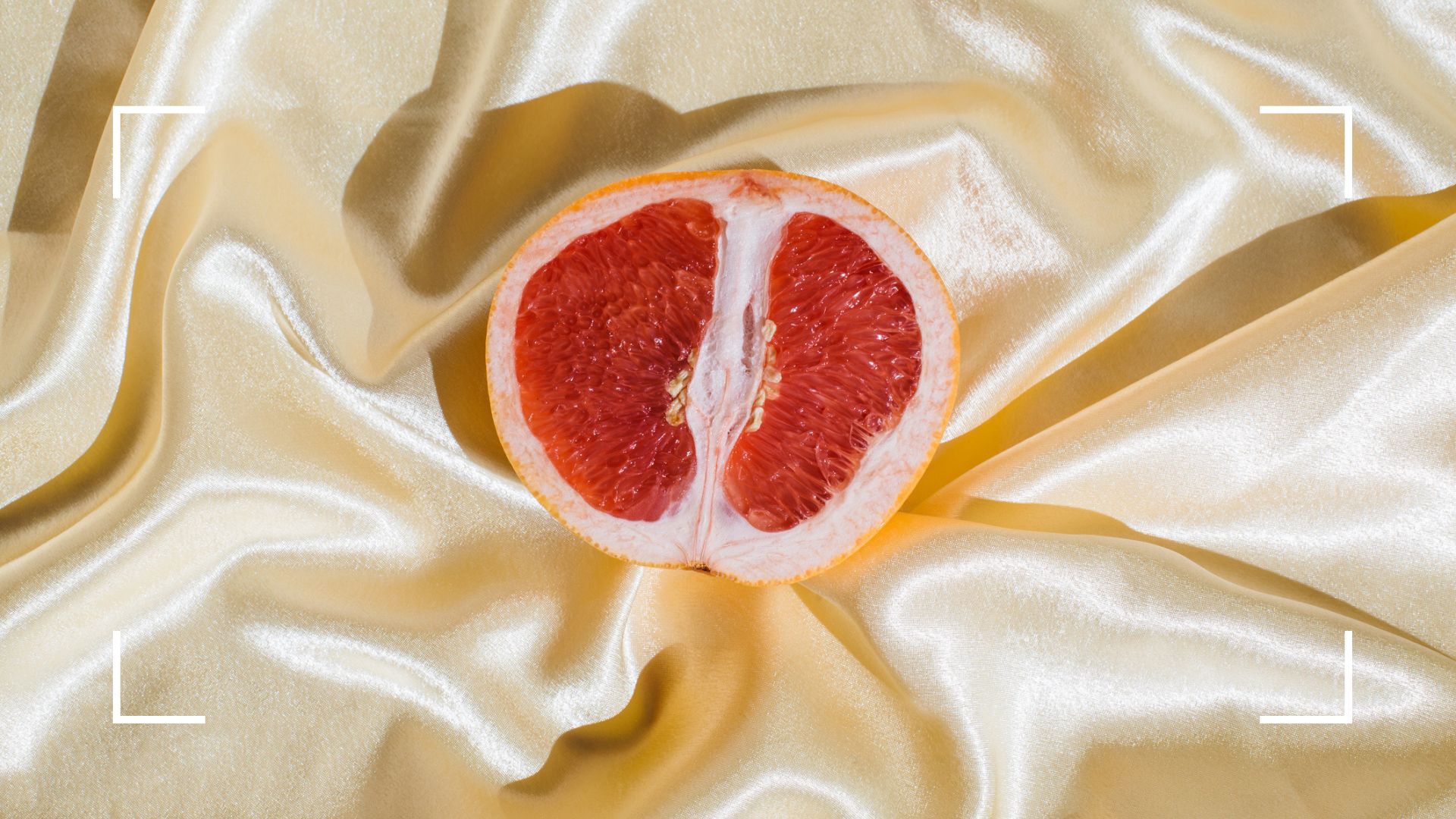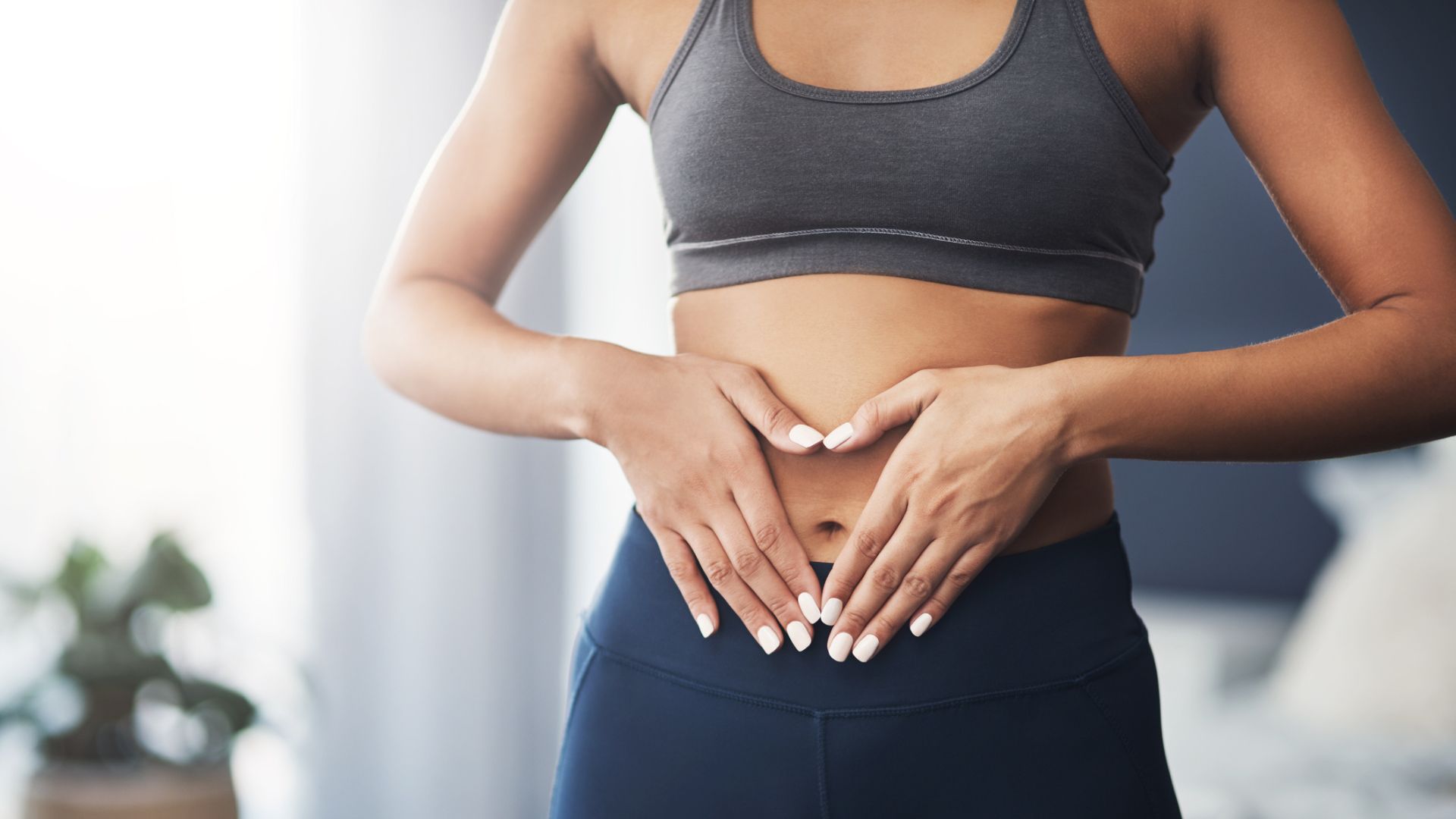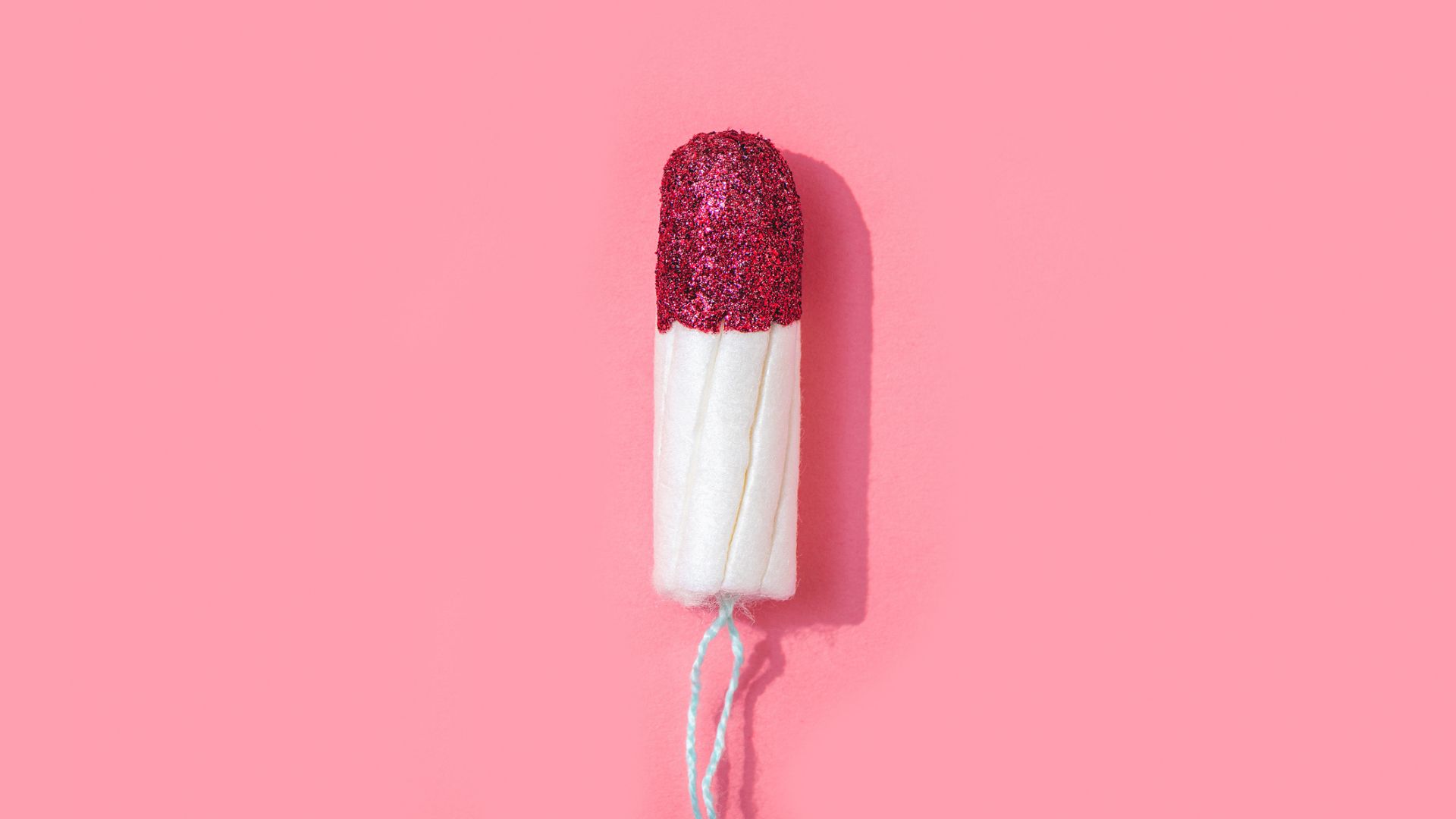A vagina timeline of changes down there, from your 30s to your 60s and beyond
Here, experts explain how to keep your vagina healthy as you age


From anti-aging skincare to the best supplements to take at different life stages, you're probably very aware of how certain aspects of your health change as you get older. However, your vagina also passes through various stages - in your thirties, forties, fifties, sixties, and beyond - and it can impact multiple aspects of your wellbeing.
Your vagina might not be an area of your body you think about particularly intimately when it comes to aging. However, it can be responsible for everything from how satisfied you are with your sex life to your confidence moving around the gym. What's more, things like birth control and motherhood plans can also impact it as you pass through the decades.
As such, if you're trying to learn what a normal vagina looks like, then it is worth understanding the changes in how it may look and feel as you get older. We've called on the experts to share how you can look after your nether regions at various points in your life - including how to tackle vaginal dryness and when you should start doing pelvic floor exercises. It's important to note that if you are concerned about your intimate health at any point then you should always seek the advice of a doctor.
How do vaginas change as we age?
Your vagina in your 30s
It's good news. "Women in their thirties have excellent strength of collagen and pelvic floor," says Dr Angela Rai, a GP. "High estrogen levels lead to excellent libido and there is thick and strong labia tissue."
However, sex, contraceptive use, pregnancy, and childbirth are factors that can also impact vaginal health during this decade. "Pigmentation of the vulva may become darker after childbirth, and pelvic floor strength may decrease - so you may experience symptoms like stress continence when you cough or sneeze may occur," notes Dr Ghazala Aziz-Scott, a specialist in integrative women's health and bioidentical hormone balancing. "Pregnancy and childbirth can also lead to hormonal changes that cause vaginal dryness so intercourse may become uncomfortable."
As such, there are some key things you can do to look after your vaginal health at this time. "Practice good hygiene - but avoid using soaps with fragrances, oils, and sprays, and don't leave tampons in too long," recommends Dr Rai. "Maintain a healthy BMI and exercise regularly. If you've suffered any damage to your vagina during childbirth - like a weak pelvic floor, prolapse, bladder dysfunction, and incontinence - then pelvic floor exercises can help." Experiencing vaginal dryness? Dr Aziz-Scott, who also works with Marion Gluck Clinic, suggests using water-based lubricants if you're trying to learn how to be more confident in the bedroom.
Your vagina in your 40s
The onset of perimenopause symptoms, which can arrive in your forties, may shift things again. "This means that hormone levels are fluctuant. Estrogen levels rise and fall in a general downward trend," explains Dr Aziz-Scott. "Symptoms such as vaginal dryness, urinary incontinence, and recurrent urinary tract infections are common due to this estrogen deficiency.
Sign up for the woman&home newsletter
Sign up to our free daily email for the latest royal and entertainment news, interesting opinion, expert advice on styling and beauty trends, and no-nonsense guides to the health and wellness questions you want answered.
"For this reason, you may also be at greater risk of infection," she says. "The tissues of the vagina have estrogen receptors which keep the tissue plump and also stimulate protective vaginal lubricants. There are also changes in vulval collagen and vaginal pH."
It's not all downhill though. If you are keen to learn how to have better sex, then this decade is the perfect time. "You'll likely know your body better now, which will increase your chances of having a fulfilling sex life," notes Dr Rai. "Tackle decreases in vaginal dryness and, simultaneously, your libido by allowing plenty of time for foreplay and clitoral stimulation before intercourse. It can also be helpful to maintain a strong pelvic floor, use water-based lubricants and low-dose topical estrogen cream to stimulate the secretion of the glands in the area." If you need additional help with this then the best pelvic floor trainers can be beneficial for some people.

Your vagina in your 50s
Similarly, as women pass through the different stages of menopause, vaginal health changes again due to further loss of estrogen. "There is thinning of the vaginal epithelium, and the vulva and vagina can lose volume," notes Dr Aziz-Scott. "The pelvic floor also becomes laxer, while vaginal tissues are more fragile and prone to infection and can tear during intimate contact."
Indeed, sex can become much less pleasurable. "Dryness and thin atrophic tissue leads to painful penetration," warns Dr Rai. The painful vaginal discomfort that may be experienced during intercourse at this life stage has been likened by some to feeling like sandpaper or the sensation of needing to go to the toilet.
However, there are steps you can take to minimize the impact. "Vaginal estrogens and long-term use of hormone replacement therapy, commonly known as HRT, can be really protective," says Dr Aziz-Scott. Additionally, Dr Rai adds, "Having regular sexual intercourse with a partner, or solo using one of the best vibrators, helps to prevent these changes. You can also use a water-based lubricant and low-estrogen cream."
Your vagina in your 60s and beyond
While many signs of menopause - like hot flushes, sleep disturbance, and anxiety symptoms - will probably have slowly tailed off by your sixties, you may still be experiencing some discomfort down there. In fact, by this decade it is estimated that nearly 60% of women experience vaginal dryness.
This can continue to cause issues in your sex life. "When intercourse hurts for women after menopause, there's this involuntary reaction," says Stephanie S. Faubion, a clinician who specializes in menopause, hormones, and sexual health concerns, and the author of Mayo Clinic: The Menopause Solution. "You anticipate having painful sex, and then your pelvic floor muscles spasm to protect you. Your brain is saying 'this is going to hurt'." Just like before, there are ways to reduce the impact.
However, if in doubt, consult your doctor. Dr Aziz-Scott adds, "Unless topical estrogens have been used, there can be vulvovaginal atrophy with very thin papery skin in the vagina and the vaginal canal can narrow. Women need to be aware of the long-term impact if they don’t seek the correct advice and treatment."
How can you look after your vagina as it ages?
"The vagina changes just as the rest of the body does as you get older," explains Dr Rai. "During your twenties, the vagina is usually at its prime due to optimal hormone levels including estrogen, progesterone, and testosterone. The skin is healthy, elastic, and well-lubricated, and the pelvic floor muscles are also usually strong at this time. Factors that affect the health of the vagina include contraceptive pills, sexually transmitted infections, and childbirth.
"Maintenance of vaginal health in your twenties should be simple and includes washing with water and mild soap only. Perfumed products should not be used as these can affect the natural vaginal flora, with harsh chemicals and even tight clothing leading to an overgrowth of certain bacteria causing conditions like bacterial vaginosis or fungal infections leading to thrush."
It is common to struggle to tell the difference between regular vaginal aging and whether something might be wrong down there. Dr Rai warns, "If there is an abnormal discharge, an unusual smell, itching or soreness then medical attention should be sought." Additionally, if you experience itching, pain during sex, or new lumps then you should check with a doctor. However, do these other things regularly to help your vagina stay feeling good:
- Always keep hydrated. Drinking water keeps your skin hydrated, and it can do the same for your vagina as well.
- Doing pelvic floor exercises can help to stem bladder leakage and help sex feel comfortable again
- Ditch your office chair - instead, sit on a Swiss ball for 15 minutes a day. This forces the muscles of your pelvic floor to contract.
- If your problems revolve around dryness during sex, then a lubricant can make things easier - just remember not to use oil-based options with condoms.
- We slather expensive creams on our faces to help slow the aging process, but we can do the same to our vaginas. Vaginal moisturizers, such as Vagisan, help to maintain a natural pH, as well as keep the skin supple and hydrated.
- A doctor can prescribe vaginal estrogen in a cream, tablet, or ring.
- Give up smoking. It can further lower estrogen levels, exacerbating the impact of age-related drops in the hormone.
- Continue having sex. The more you have intercourse, the easier it is to keep doing it. If you don't have - or indeed want - a partner, then female masturbation is a great way to keep your vagina happy.

What is the pelvic floor?
"The pelvic floor is the name given to the muscles and ligaments that make up the base of the pelvis," says Hollie Grant, personal trainer and founder of The Bump Plan. "The pelvis itself is a bowl-shaped structure, without a bony base - so the muscles of the pelvic floor, which span like a hammock from the tailbone to the pubic bone, are necessary to support our internal organs.
"Additionally, it also controls the passage of urine and feces and plays a role in sexual function. The pelvic floor muscles wrap around the urethra, vagina, and anus and therefore control the release and contraction of these holes. The reason many of us realize we have an issue with our pelvic floor is that one of these functions is affected - like leaking urine or a lack of sensation during sex."
There are certain reasons why some women might have a weaker pelvic floor than others. For example, a lack of movement - research by Glasgow Caledonian University has linked sitting too long with urinary continence in older women. "Others may be suffering due to previous injuries, straining associated with chronic constipation or obesity," notes Grant. "There is also a link between the onset of the menopause and pelvic floor dysfunction."
Motherhood can also be a factor. "For many women, pregnancy can highlight an issue with the pelvic floor," adds Grant. "It is a time of growing strain on the pelvic floor musculature and hence will show up any prior weaknesses, or potentially create new weakness. Childbirth can also weaken the pelvic floor, specifically if via an assisted vaginal birth, episiotomy, or with a significant tear."
Pelvic floor exercises to try at home
"The pelvic floor muscles are just like any other muscles, they must be trained to stay strong," explains Grant. "Prevention is better than cure and so it’s best to ensure a functional strong pelvic floor before symptoms of pelvic floor dysfunction arise." You can try these exercises by yourself:
1. Holds
- These help to build the endurance of the pelvic floor and target the slow-twitch endurance muscles.
- We are aiming for a hold of 8-10 seconds max (but don’t worry if it’s less than this) and 10 reps.
- You can try these in a seated position, four-point kneeling, lying on your back, or (the hardest) while standing.
- Inhale and, as you exhale, imagine tightening or squeezing the anus, vagina, and urethra and lifting them upwards to lift the pelvic organs.
- Try to maintain the hold while breathing (that can be tricky but important) and then release when ready.
- It’s just as important to release the pelvic floor, as it is to contract it so don’t forget to release between each hold.
2. Pulses
- These help to build strength in the pelvic floor and target the fast twitch (back-up army) muscles.
- Use the same technique as with the holds, but obviously they will be much shorter and faster.
- We are aiming for a rapid, short lift of the pelvic floor, with a release between each. Aim for 10 pulses.
3. The Knack
- Start in standing, with the feet hip-width apart and parallel.
- As you inhale drop down into a squat position, imagining you are about to sit down onto the toilet.
- You really want to be sat back and down into the position - not trying to touch your toes.
- Once here exhale to lift the pelvic floor and push yourself back to standing.
- You’re essentially lifting the pelvic floor, before lifting yourself. Repeat for 10-12 reps.
4. Zips
- Start in four-point kneeling (on hands and knees), with a nice neutral spine (not overly rounded, or extended).
- Visualize a zip that runs from the tailbone, up past the pubic bone, past the belly button and up to the sternum (the middle of the ribcage).
- Start with this imaginary zip open, so the tummy and pelvic floor are relaxed.
- Inhale, and as you exhale imagine zipping yourself up from the tailbone to the sternum.
- Another way of visualizing this is tightening the anus, vagina and then urethra, and drawing the tummy in slightly.
- Inhale to “unzip” and allow the tummy to soften and release. What you are essentially doing is contracting your pelvic floor and then your transverse muscle, and then allowing them to release.
- You may even see your tummy move as you do this. Repeat for 10-12 reps.
5. Glute bridges
- Start by lying on your back with a neutral pelvis, feet hip-width apart and knees bent.
- Inhale to prepare and as you exhale press your feet into the floor, and start to lift the hips up towards the ceiling until you have a diagonal line running from the knees to the chest.
- Your pelvis should still feel relatively neutral (so don’t go so high that it’s sticking out).
- Inhale to stay, and then exhale to slowly lower the pelvis back down to the ground. Repeat for 10-12 reps.

Lauren is a freelance writer and editor with a decade of print and digital journalism experience. While she specialises in covering health and wellness topics - ranging from nutrition and fitness, to women’s health conditions and mental wellbeing - she has written across a diverse range of lifestyle topics, including fashion, beauty, interiors and travel.
In addition to writing for Woman & Home and sister title Homes & Gardens, Lauren's work has also been published by Women’s Health, The Times, Daily Telegraph, Elle, Cosmopolitan, The Guardian, Marie Claire, Body + Soul, Stylist, Glamour, Grazia, Red, Dazed Digital, Yahoo Life, The Sun’s Fabulous, Get The Gloss and Hello! among others.
-
 Unforgettable date ideas to make a great first impression or rekindle romance
Unforgettable date ideas to make a great first impression or rekindle romanceForget the same old first date formula - these unforgettable date ideas will leave them thinking about you long after you go home
By Natalie Denton Published
-
 Butter yellow might be the colour of the season, but Amal Clooney is making me want to try sunshine shades
Butter yellow might be the colour of the season, but Amal Clooney is making me want to try sunshine shadesSpark some joy by adding some statement yellow pieces to your wardrobe just in time for summer
By Matilda Stanley Published